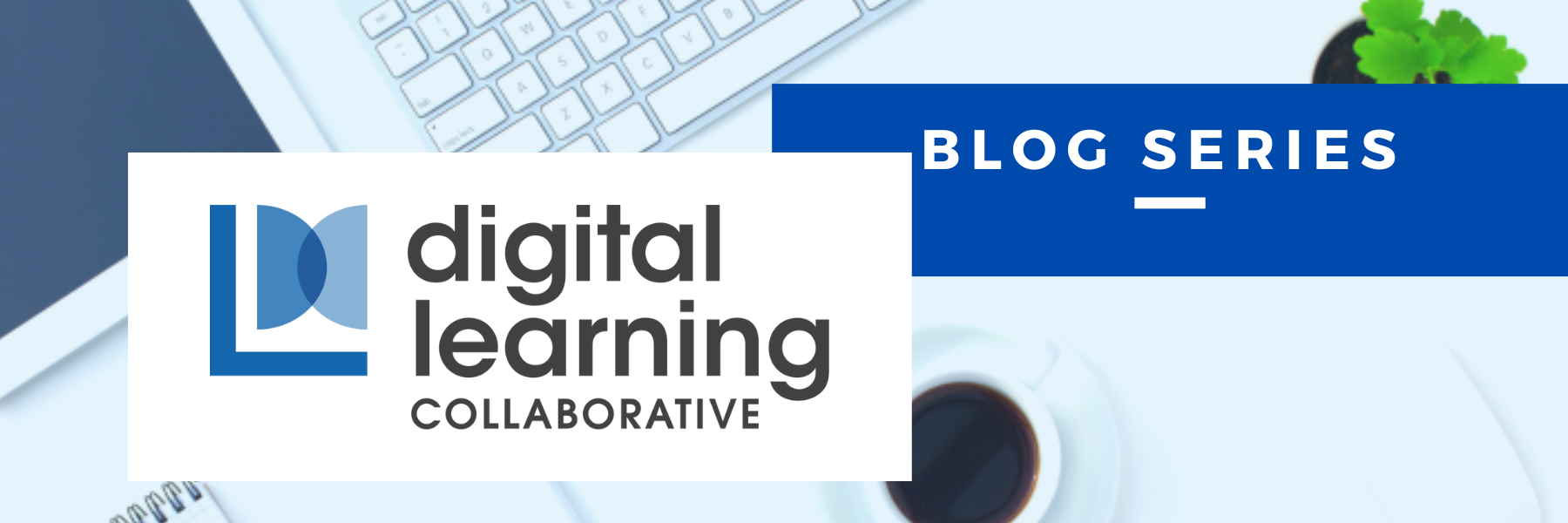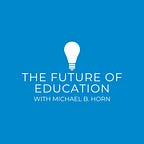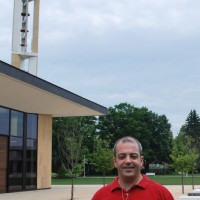January 26, 2024
The intersection of ESAs and digital learning (part 2)
As I mentioned when I shared part one of John’s commentary, this is just great marketing for the privatization of public schooling. Let’s apply this logic to other public services.
Instead of paying taxes that go to the upkeep of roads. Instead, we stick a device in everyone’s car and they pay based on how much road they drive on and the quality/capacity of those roads (e.g., interstates would cost more than side road). While toll roads exist, I’m talking ALL roads. Using the logic behind educational savings accounts, I mean it is the fair way. If I’m not using those roads, why should I pay for the upkeep of those roads. The problem – like is true of so many other public services – is that this disproportionately impacts those at the bottom levels of society. Poor people often have to travel farther to go to work because they can’t afford to live closer to their place of employment. Most poor people live in food deserts, so they have to travel farther for groceries. And the list goes on.
Similarly, imagine if instead of paying taxes to go to our emergency services, we just paid for each use. And since this is America and we know how this will evolve, imagine that there is a tiered pricing system that allows us to pay more per use to get a higher level of service. Now imagine your house is on fire. The rich person can pay whatever the highest level of service available is to save his home. The poor person on the other hand, well they may not be able to pay for the service at all.
The whole idea behind public services is that everyone contributes for the public good. It is in my vested interest to live in a community that is relatively free of crime and disasters, where people are healthy and educated, and infrastructure is sufficient for not only my needs but the needs of everyone in my community. The only way that works is if we all contribute. And what get lost in the American conversation is that it isn’t about everyone contributing equally, but based on their station in life. My status in this world has largely been based on factors outside of my own control (e.g., where I was born, the family I was born into, my ethnicity and gender, etc.). I had no control over any of these things, but much of where I am today was due to these factors – not anything that I did personally.
All we need to do is look at health care in the United States and you can see a stark contrast between what a public system should be and what it can become when you allow people to opt out of that system for their own benefit. Rich people don’t worry about affording health care. Historically, people with jobs didn’t have to worry about it that much (but due to the rich people’s attacks on unions because they cost rich people money and their sole interest in being richer and richer, that’s no longer true). Poor people worry about health care. The reason why we have a two tiered health care system in the United States is because this public good – something that should be a sacred public service – is a private enterprise. Do we really want the same thing for our education system?
By John Watson
An earlier blog post discussed educational savings accounts in the context of other forms of educational choice. Those choice options intersect with digital learning in several ways:
- Many online schools and hybrid schools are charter schools. In fact, it’s nearly certain that in the United States, the growth of online learning would have been very different if charter school laws did not exist. Many of the earliest online and hybrid schools, in states as diverse as Pennsylvania, Colorado, and California, were charter schools.
- Links between private school vouchers and online/hybrid schools are not so clear. Although plenty of private online and hybrid schools exist, we are not aware of any large enrollment online/hybrid private schools that have tapped significantly into voucher funding.
- Course choice was envisioned, in most states, as being largely or entirely based on enrollment in online courses. In some states such as Florida and Georgia, course choice policies were linked closely to state virtual schools. Other states, such as Utah, developed policies based on the expectation that a wide range of online course providers would be available.
- ESAs hold potential for recipients to use funds for online/hybrid schools and courses. Most ESA recipients already have the option to use public funds to attend private online and hybrid schools. (However, some states, including Florida, have restricted the use of these funds for online schools—in an oversight that we expect may be corrected given Florida’s historical support of online learning.)
The intersection of ESAs, micro-schools, and digital learning
The policy landscape gets even more complicated when we look at the combination of existing online charter schools, ESAs, and microschools.
Microschools have been a growing trend in the past couple of years, although enrollment data are lacking. In 2022 EdChoice estimated that just over a million students were in microschools or learning pods, but as the authors explained, they were using a very broad definition that likely had very high overlap with families that identify as home-schooling. Because of this, it’s unclear how much had changed on the ground, versus just a difference in families being more likely to use the term “microschool.”
In the absence of public funding availability, it seems likely that the microschool movement will grow slowly, due to the limit on the number of families willing and able to fund their children’s education. But both online schools and ESAs offer the opportunity for families to tap into public funds when using a microschool.
An example of a microschool tapping into charter school funding is the Queer Blended Learning Center in Phoenix, a microschool whose students are officially enrolled in one of two online charter schools. This is one example; others exist in Arizona and probably in some other states.
In ESA states, those same students could tap into ESA funds to attend a microschool like the QBLC. Whether online charter school enrollment, or tapping into ESA funds, is easier for the student and family is likely a state-by-state issue. There is even the potential situation in which two students in the same school would be tapping into different public funding sources, although we are not aware of any examples of this.
Trajectory and outlook
The previous blog post noted that ESAs in 2023 went from being overlooked to (maybe) overhyped.
The overlooked element is captured by early 2023 articles suggesting that there was little attention to education policy and even less activity. In fact, while so much media attention was on critical race theory, Moms for Liberty, book bans, and similar topics that dominated Fox News and MSNBC, the more important activity was in the debating and passing of ESAs.
Another important element of ESAs was that although they are often considered to be driven by conservative learning politicians and activists, in some states (e.g. Florida and Arizona) these same legislatures were passing significant pay increases for teachers in public schools. These pay increases, by design or not, helped blunt the pushback that these laws were anti-public education.
Through the first half of 2023, ESAs went from being under the radar to being recognized as the main source of education policy energy, as many states considered ESAs.
And then a funny thing happened in some red-learning states. In Georgia, pushback from rural areas killed the ESA law being proposed. The effort to pass ESAs in Texas has also slowed. In other states, the political response led to compromises that either limit the number of students eligible, or slow the rollout over several years, as in Iowa—time in which perhaps the number of eligible students will be reduced. There are already signs of opponents looking at reducing the impact of ESAs, or attempting to reverse course altogether, in several states.
The outlook for 2024 and beyond depends on two data sets that we will be watching.
The first is the number of students and families taking part in ESAs, especially in the few states that allow universal or near-universal access. It’s too early to tell if ESA uptake is going to grow to be similar in size to homeschool students, private schools, charter schools—or perhaps bigger than all of them combined. These data are very slowly coming into view, partially because of the slow rollout and partially because of data limitations. If ESA uptake grows, it is highly likely that ESA students/families will become a major part of the digital learning landscape, much as charter schools are now.
The second number we will look at in 2024 is the number of states that pass new ESA laws, net of any that restrict already-passed laws. A corollary question will be whether any purple states—or even blue states—pass such laws, which would suggest far broader appeal than if ESAs are limited to conservative states. Here again, Arizona will be a bellwether, because politically Arizona has been very conservative, but it is trending more moderate. If a politically moderate Arizona preserves ESAs, that will be a sign of their staying power.
View email in browser
Evergreen Education Group · 700 Main Ave Ste E · Durango, CO 81301-5437 · USA
No comments yet.
RSS feed for comments on this post. TrackBack URI
- SEO Powered Content & PR Distribution. Get Amplified Today.
- PlatoData.Network Vertical Generative Ai. Empower Yourself. Access Here.
- PlatoAiStream. Web3 Intelligence. Knowledge Amplified. Access Here.
- PlatoESG. Carbon, CleanTech, Energy, Environment, Solar, Waste Management. Access Here.
- PlatoHealth. Biotech and Clinical Trials Intelligence. Access Here.
- Source: https://virtualschooling.wordpress.com/2024/01/26/the-intersection-of-esas-and-digital-learning-part-2/
- :has
- :is
- :not
- :where
- 08
- 12
- 2022
- 2023
- 2024
- 26
- 700
- a
- Able
- About
- about IT
- access
- Accounts
- activists
- activity
- again
- All
- allow
- allows
- already
- also
- Although
- altogether
- am
- america
- American
- an
- and
- and infrastructure
- any
- anything
- appeal
- Apply
- ARE
- areas
- arizona
- articles
- AS
- At
- Attacks
- attempting
- attend
- attention
- authors
- auto
- availability
- available
- ave
- aware
- Bans
- based
- BE
- because
- become
- been
- begin
- behind
- being
- benefit
- between
- Beyond
- bigger
- Blog
- Blue
- book
- born
- both
- Bottom
- broad
- broader
- but
- by
- california
- CAN
- captured
- car
- care
- Category
- Center
- certain
- changed
- choice
- clear
- closely
- closer
- CO
- Colorado
- combination
- combined
- coming
- comment
- comments
- community
- complicated
- conservative
- considered
- context
- contrast
- contribute
- contributes
- contributing
- control
- Conversation
- corrected
- Cost
- could
- Couple
- course
- courses
- Crime
- critical
- data
- data sets
- debating
- definition
- depends
- Design
- developed
- device
- DID
- difference
- different
- digital
- disasters
- discussed
- diverse
- do
- dominated
- Dont
- drive
- driven
- due
- e
- each
- earliest
- Early
- easier
- Education
- educational
- effort
- either
- element
- eligible
- emergency
- employment
- end
- energy
- enrolled
- enrollment
- Enterprise
- entirely
- envisioned
- equally
- ESA
- especially
- estimated
- etc
- ethnicity
- Even
- Evergreen
- everyone
- everyone’s
- evolve
- example
- examples
- exist
- existing
- expect
- expectation
- explained
- fact
- factors
- fair
- families
- family
- far
- feedback
- few
- Fire
- First
- florida
- food
- For
- forms
- fox
- Fox News
- Free
- from
- full
- fund
- funding
- funds
- funny
- Gender
- Georgia
- get
- given
- Go
- Goes
- going
- good
- great
- groceries
- Ground
- Group
- Grow
- Growing
- Grows
- Growth
- had
- Half
- hand
- happened
- Have
- Health
- Health Care
- healthy
- helped
- here
- High
- higher
- highest
- highly
- his
- historical
- historically
- hold
- Home
- House
- How
- However
- HTTPS
- Hybrid
- i
- idea
- identifier
- identify
- if
- imagine
- Impact
- Impacts
- important
- in
- In other
- Including
- Increases
- Infrastructure
- instead
- interest
- intersect
- intersection
- into
- issue
- IT
- Jobs
- John
- just
- Know
- lacking
- landscape
- large
- largely
- Law
- Laws
- learning
- Led
- less
- Level
- levels
- Liberty
- Life
- like
- likely
- LIMIT
- limitations
- Limited
- linked
- List
- little
- live
- logic
- longer
- Look
- looking
- lost
- Main
- major
- many
- Marketing
- May..
- maybe
- mean
- Media
- mentioned
- Meta
- Michael
- million
- moderate
- money
- more
- most
- movement
- MSNBC
- much
- my
- nearly
- Need
- needs
- net
- New
- news
- no
- noted
- now
- number
- of
- offer
- Officially
- often
- on
- ONE
- online
- online course
- Online Learning
- only
- Opportunity
- Option
- Options
- or
- Other
- Others
- our
- out
- Outlook
- outside
- over
- Oversight
- own
- paid
- part
- pass
- Passing
- past
- Pay
- paying
- Pennsylvania
- People
- people’s
- per
- perhaps
- person
- Personally
- phoenix
- Place
- plato
- Plato Data Intelligence
- PlatoData
- Plenty
- pm
- pods
- policies
- policy
- political
- politically
- Politicians
- poor
- Post
- potential
- power
- presentation
- previous
- pricing
- private
- probably
- Problem
- proposed
- providers
- public
- question
- Race
- radar
- range
- really
- reason
- recipients
- recognized
- reduce
- Reduced
- reducing
- relatively
- resource
- response
- restrict
- restricted
- reverse
- Rich
- road
- roads
- rollout
- Rural
- Rural Areas
- same
- Save
- Savings
- School
- Schools
- Second
- see
- seems
- service
- Services
- Sets
- several
- shared
- should
- side
- sign
- significant
- significantly
- Signs
- similar
- Simple
- since
- site
- situation
- Size
- slow
- Slowly
- So
- Society
- some
- something
- Source
- Sources
- spam
- stark
- State
- States
- station
- Status
- staying
- Stick
- Student
- Students
- such
- sufficient
- suggest
- support
- syndication
- system
- TAG
- taking
- talking
- Tap
- Tapped
- tapping
- Taxes
- teachers
- tell
- term
- texas
- than
- that
- The
- their
- Them
- then
- theory
- There.
- These
- they
- thing
- things
- this
- those
- to
- today
- too
- top
- Topics
- travel
- Trend
- trending
- true
- two
- unclear
- under
- Unions
- United
- United States
- Universal
- uptake
- us
- use
- uses
- using
- utah
- Versus
- very
- View
- Virtual
- want
- was
- watching
- Way..
- ways
- we
- WELL
- went
- were
- What
- whatever
- when
- whether
- which
- while
- whole
- whose
- why
- wide
- Wide range
- will
- willing
- with
- WordPress
- Work
- works
- world
- worry
- would
- years
- yet
- you
- Your
- zephyrnet




![[REPOST] CANeLearn Webinar – State of the Nation: K-12 e-Learning in Canada (24 January 2023)](https://platoaistream.com/wp-content/uploads/2023/01/repost-canelearn-webinar-state-of-the-nation-k-12-e-learning-in-canada-24-january-2023-300x225.jpg)







